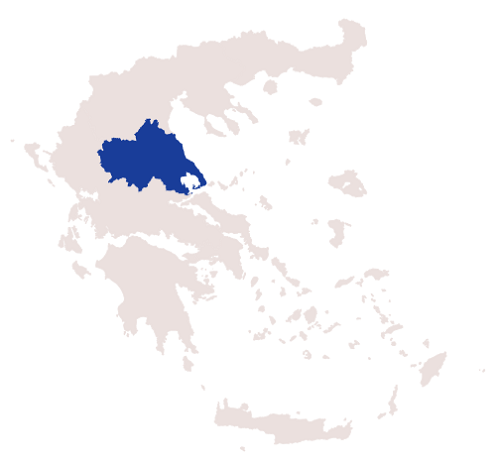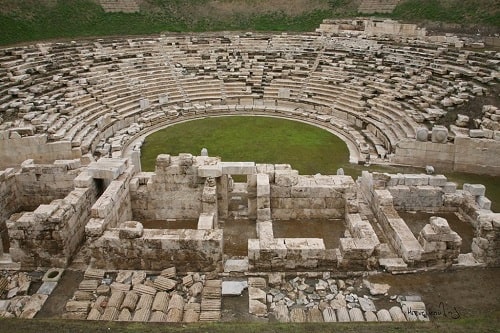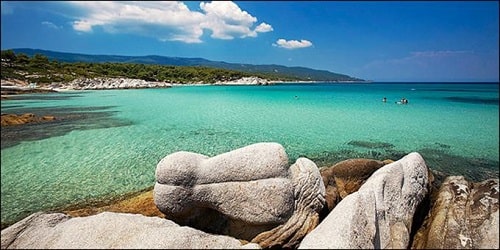STEM and Robotics for teachers

Course Overview
STE(A)M- Science, Technology, Engineering (Arts) and Mathematics is an approach that uses different skills as access points for guiding students’ learning process. Integrated STEM education in European schools is an approach to prepare students for highly technology-based society.
Learning with educational robotics provides students, who usually are the consumers of technology, with opportunities to stop, question, and think deeply about technology. When designing, constructing, programming, and documenting the development of autonomous robots or robotics projects, students not only learn how technology works, but they also apply the skills and content knowledge learned in school in a meaningful and exciting way.
This course aims to promote robotics in classroom by connecting robotics learning with STEAM (Science, Technology, Engineering, Art + Design and Math), an educational framework that brings reality into the classroom by connecting different subjects together. This way students can find ways to work together to foster collaboration skills, express themselves using the technological tool, problem-solve, and think critically and innovatively.
Target Audience
This course is addressed to teachers, principals, trainers, educational counsellors, career counsellors, school psychologists, headmasters, school management and administrative staff working in primary schools, secondary schools, vocational schools, training centers, adult education schools, higher education and NGOs.
Course Objectives
- Involve teachers in learning activities related to technology, engineering, math, art and science (STEAM)
- Improve the quality of teaching, studying and learning processes through the use of technology
- Covering the different types of activities a teacher can use to modify his/her teaching skills
- Providing the theoretical background of STEAM
- Access to the benefits of project-based learning through robotics
- Understanding the important role of technology in education
- Improving educators’ knowledge and skills in the field of STEAM & robotics
- Create interactive STEAM learning materials to be used into classroom
- To provide basic training on topics such as controls, automatisms, robots and programmable machines
- To familiarize with current use of robotics in nowadays education trends
Methodology
The course methodology will ensure the active involvement of the participants in all phases, that is, prior, during and after the delivery of the course. More specifically, upon confirmation that the course will take place, the participants will receive preparatory material (if needed), which will cover all important concepts to be presented during the delivery of the course. The participants will have the opportunity to exchange feedback with the organiser of the course and the trainer as well as to request any clarification related to the content of the course.
Topics Included
- STEAM education theory
- STEAM education combined with playing
- Robotics Material
- Basic robotics coding
- Learning by doing
- Gamifing the classroom
- Science experiments
- Use robotics to teach STEAM
Learning Outcomes
By the end of this STEM and Robotics for teachers course, participants will be able to:
- Plan a STEM lesson in a suitable framework
- Design lessons that are interactive, inclusive, for all types of learners
- Manage programming software
- Improve digital competences and skills
- Use creativity to gamify the classroom and motivate students
- Create a participative classroom environment, as well as an atmosphere of collaboration and teamwork
- Present new STEM materials in an engaging way and offering ways for action and expression
- Learn the limitations and importance of using robots in education
- Know teaching methods and techniques for using robots in education
- Get the knowledge of computational thinking skills and basic components
- Implementing computer programs and games with an educational value
- Recognize the use and application of robotic theories in education
- Give and receive constructive feedback based on objective observation
Type of Certification
- Certificate of attendance of the training course
- Europass mobility certificate – to be issued by the applicant’s NA
Day 1 – Introduction to STEAM
- Introductory meeting, explanation of practical arrangements
- Ice-breaking activities
- Theoretical Knowledge
- ICT in Education Teaching children to develop a scientific mind and attitude
- Teaching the skills of scientific enquiry processes
- The importance of creative thinking
- Introduction to STEAM field along with the concepts, theories, practical applications
- Introduction in STEAM Education and in the world of robotics
Day 2 – STEM education
- How to create a STEAM project based on a curricular mathematics topic
- The importance of STEAM education
- Brainstorming activities
- The structure of STEAM lessons for children, imitating the real science
- Importance of STEAM education combined with playing
- Combining STEAM education activities with the real world
Day 3 – Robotics in classroom
- Introduction to basic programming
- Basic Principles and Commands
- Software support and computer simulations on science experiments.
- Hands-On Training
- Presenting Robotics to Students
- Robotics-Related Material
Day 4 – Advanced Robotics
- Introduction to learning by doing
- How to use robotics to teach STEAM (Science, Technology, Engineering, Art and Mathematics) concepts
- Software support and computer simulations on science experiments
- Introduction to the Arduino software and C++ coding language
- Project Based Learning
Day 5 – Projects presentation
- Practical sessions
- Participants projects presentation
- Course Evaluation
- Discussing possibilities for future cooperation among participants
5 day course fee: 400€
The total cost includes:
- Pre-arrival information
- Administrative support before, during and after the training course
- Course tuition and training materials
- Training Certificate of Attendance
- Confirmation of Europass Mobility Certificate
- Administrative and organisational costs
- Coffee Breaks
- Cultural activities
Additionally, we can arrange for:
- Accommodation (hotels & touristic apartments)
- Trips
- Airport transfer
- Local transport
For additional services such as accommodation, guided city tours, airport, local transfers etc. as well as for courses lasting more or less than 5 days, please contact us for further information.
For groups of more than 5 persons from the same organization contact us so we can offer you a group discount.
Available Dates
- 12/09/2022 – 17/09/2022
- 10/10/2022 – 15/10/2022
- 15/05/2023 – 20/05/2023
The above dates can be flexible, whereas new ones can also be provided to accommodate the needs or availability of participants. Please contact us to propose dates that better suit your group.
Thessaly Region
Thessaly is a geographical region in the central part of continental Greece. Its land is basically a large plain surrounded by high mountains. It borders to the north with the periphery of Macedonia, to the south with Sterea Ellada and to the west with Epirus, while on the east it is bathed by the Aegean Sea.
Thessaly is a blessed place. Let’s not forget that mountain Olympus is in it, the tallest mountain in Greece, where according to Greek Mythology, the 12 Gods used to live. The verdant green plains, the majestic mountains, the magnificent forests and the crystal clear waters of Aegean Sea, introduce the visitor to a region of unique and unspoiled nature.

In this prefecture you can tour the archaeological sites, see unique prehistoric and historical findings, monuments, churches and monasteries, landmarks of the history of the area. In Thessaly you can select the discreet tranquility and seek inspiration in the diversity of the landscape.
Larissa City
Larissa is the capital and largest city of Thessaly region of Greece and capital of the Larissa regional unit. It is a principal agricultural center and a national transportation hub, linked by road and rail with the port of Volos, the city of Thessaloniki and Athens. Larissa, within its municipality, has 162,591 inhabitants, while the regional unit of Larissa reached a population of 284,325. Today, Larissa is a major commercial and industrial center in Greece. Legend has it that Achilles was born here, and that Hippocrates, the Father of Medicine, died here.

Larisa is a modern city built on the banks of Pinios river, and it is one of the most historic areas of Greece. It is a busy city, throbbing with life and strewn with monuments and points of interest. The city has beautiful squares, neighborhoods and parks, along with numerous commercial shops and many options as far as food and entertainment are concerned. It is said that the city has more than 1600 cafeterias (!) and is sometimes called as “the city of coffee”. But except for relaxing and drinking coffee, you should spend some time on sightseeing.
Activities In the city
- The First Ancient Theater of Larissa, one of the registered city trademarks is and the largest theater in Thessaly, having a capacity of 10,000 people and it is located on the southern side of Frourio Hill in Larissa
- The Diachronic Museum which contains important collections, from Paleolithic fossils to Byzantine times, Hellenistic and Roman sculptures, with an increased number of exhibits.


- The Mill of Pappas (Mylos tou Pappa) which is a cultural heritage museum and a living part of our city’s history.
- The Municipal Art Gallery of Larissa – G.I. Katsigras Museum where you can find significant art collections.
- River Peneus, the river that runs through the city.
- Fortress where the metropolitan church of Saint Achilleus is built.
- The famous recreation area of Alcazar Park.
- Τhe monument of Hippocrates where the grave of the “father of Medicine”, a marble statue and the Museum of Medicine can be found.
More cultural information you can find here.
Activities In the area
After you finish with the city center of Larissa, organize trips to the coastal settlements with the beautiful beaches or to the inner mountainous villages with the rich history and cultural tradition.
- The rocks formations of Meteora, a UNESCO monument, in the prefecture of Trikala, attract a large number of foreign and Greek visitors, due to their unique nature.
- The ski lovers can take the route to the Olympus ski center or Pelion ski center.
- The valley of Tempi, formed between the mountains of Olympus and Ossa (Kissavos), with its verdant vegetation consisting mostly of water-loving trees, is one of the most picturesque areas of Greece. According to the Greek mythology, Dafni and the goddesses Artemis and Aphrodite used to bathe in the sources of the area.
- The architecture and folklore lovers can visit the picturesque villages of Pelion or Ampelakia with the characteristic architectural style and history.
- In the prefecture of Larissa, you can also enjoy the sea and the sun in the great sandy beaches of the Aegean Sea and take on water sports and other related activities. Greece has ranked second in the world among 49 countries on the 2021 Blue Flag quality award list for beaches with a total of 545 of its beaches receiving the Blue Flag label and 26 of them you can find in Thessaly!


Thessaly is Welcoming You!!!
Videos
About the courses
- We can provide laptops or any other technical equipment needed in our classrooms as well as other premises that we may visit during the training course. However, you are more than welcome to bring your own laptop.
- English is the official language of our training courses.
- We have planned interactive courses for a duration of five days / Each course has an additional excursion day.
- All our trainees are provided with a certificate of attendance as well as all the necessary Europass or Youthpass Mobility documents at the end of their course. For more information on the Europass Mobility documents, consult your National Europass Centre.
- We are flexible to design a tailor-made course for your organization, if there is a minimum number of participants, so don’t hesitate to contact us to hear your needs and requests and adapt them in our existing courses.
- You can express your interest in more than one course since the application is submitted by an organization. Therefore, you can choose different courses to be attended by several people from your organisation. Please check how many applications can be submitted by each organization and what are the aims of your organization in terms of the professional development of the staff.
About your application
- There is not a deadline for expressing your interest in a course, however, there is a deadline for submitting your application for the Erasmus+ funding. The deadline for 2022 is the 23rd of February 2022. You can contact us before that, in order to help you with your application form.
- You should apply through your organization (e.g. school, NGO, Adult Centre etc.) in order to be eligible for the funding provided by the Erasmus+ program, not as an individual.
- The host organization that you may choose, must be located in a different country than your own organization. The mobility is approved only between two different countries.
- Organizations, eligible for this kind of learning opportunities, are:
- Any public or private Higher Education institution
- Any public or private organization in the field of Vocational Education and Training (VET)
- Any public or private school
- Any public or private organization in the field of adult education
- Any Youth organization or NGO
More information can be provided by your National Agency.
- You do not need to send any money at this preparatory phase. Money needs to be transferred after the approval of your organization’s application by the NA of your country.
- PIC number is the 9-digit Participant Identification Code that is used to identify organizations and it is provided after their registration on the Erasmus+ platform.
- OID number is the 8-digit Organisation ID, which is prefixed with an E, and it is obtained in order to identify organisations. Organisations that have already participated in Erasmus+ projects and have a PIC number, have been assigned an OID automatically therefore, they do not need to register again.
- The National Agency of your country is responsible to approve or not your application. Unfortunately, we are not the ones to do so.
- KAINOTOMIA PIC 921613006 & OID E10137242 numbers
Here you can find useful links that may help you in your proposal submission:
Legal entities
https://ec.europa.eu/info/publications/legal-entities_en
Financial identification
https://ec.europa.eu/info/publications/financial-identification_en
Distance Calculator
https://erasmus-plus.ec.europa.eu/resources-and-tools/distance-calculator
Please note:
The schedule describes likely activities but may differ significantly based on the trainer delivering the specific session and the requests of the participants.
If you would like to discuss a specific topic, please indicate it at least 4 weeks in advance. Course modifications are subject to the trainer’s discretion.
The trainer will send you the definitive course schedule approximately two weeks before the course as well as preparatory material (if needed), which will cover all important concepts to be presented during the delivery of the course.
If you don’t find a course that matches your specifics, please contact us so we can arrange a tailor-made course that better suits your needs and requests.


